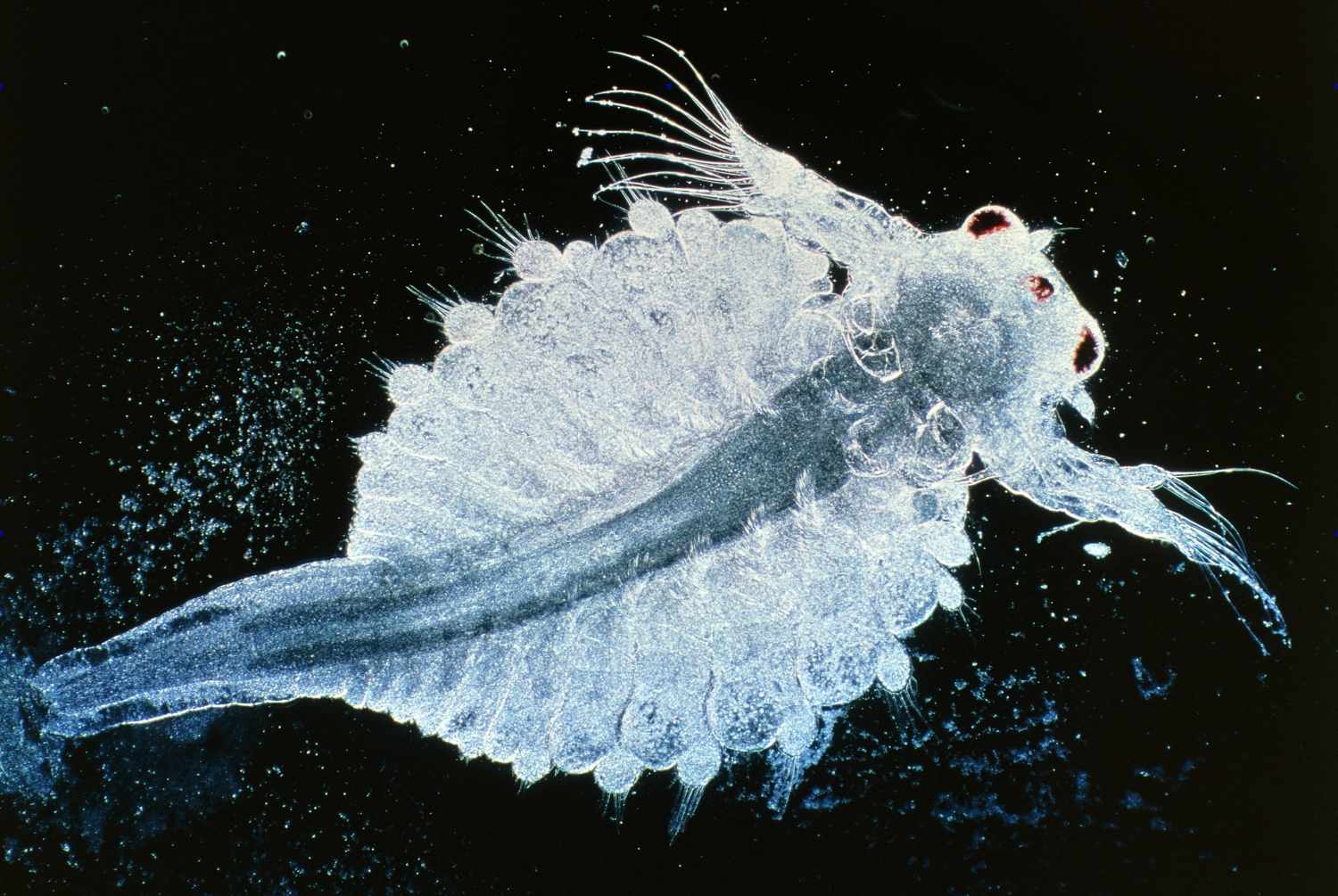
Ever heard of organisms that thrive in boiling water or survive in extreme radiation? These fascinating creatures, known as extremophiles, live in conditions that would be deadly for most life forms. From the scorching heat of hydrothermal vents to the icy realms of Antarctica, extremophiles have adapted to survive and even flourish. They challenge our understanding of life's limits and offer insights into potential extraterrestrial life. This article dives into 50 mind-blowing facts about these resilient organisms, revealing their unique adaptations and the extreme environments they call home. Ready to be amazed by nature's toughest survivors? Let's get started!
Key Takeaways:
- Extremophiles are extraordinary organisms that thrive in extreme conditions, from scorching heat to freezing cold, and even in highly acidic or salty environments. They have unique adaptations that make them valuable for space exploration and biotechnology.
- Extremophiles have fascinating abilities, such as surviving in the vacuum of space and producing enzymes used in industrial processes. They offer insights into potential life beyond Earth and have practical applications in fields like DNA amplification and metal extraction.
What Are Extremophiles?
Extremophiles are organisms that thrive in conditions that would be hostile or even lethal to most life forms. These incredible creatures have adapted to survive in extreme environments, from boiling hot springs to the icy depths of the ocean. Here are some fascinating facts about these extraordinary organisms.
- Extremophiles can survive in temperatures above 100°C, such as those found in hydrothermal vents.
- Some extremophiles, called psychrophiles, thrive in freezing temperatures, even below 0°C.
- Acidophiles are extremophiles that live in highly acidic environments, with pH levels as low as 1.
- Alkaliphiles prefer extremely alkaline conditions, with pH levels up to 12.
- Halophiles are extremophiles that thrive in environments with high salt concentrations, such as salt flats and salt mines.
- Barophiles, also known as piezophiles, live in high-pressure environments, like the deep ocean trenches.
- Xerophiles can survive in extremely dry conditions, such as deserts.
- Radioresistant extremophiles can withstand high levels of radiation that would be lethal to most other organisms.
- Some extremophiles, known as metallotolerants, can live in environments with high concentrations of heavy metals.
- Thermoacidophiles thrive in both high-temperature and highly acidic environments.
Unique Adaptations of Extremophiles
Extremophiles have evolved unique adaptations that allow them to survive and even thrive in their harsh environments. These adaptations are often specific to the type of extreme conditions they face.
- Thermophiles have heat-stable enzymes that function optimally at high temperatures.
- Psychrophiles produce antifreeze proteins to prevent ice crystal formation in their cells.
- Acidophiles have specialized cell membranes that protect them from acidic damage.
- Alkaliphiles maintain a stable internal pH by pumping out excess hydroxide ions.
- Halophiles accumulate compatible solutes like glycerol to balance osmotic pressure.
- Barophiles have flexible cell membranes that withstand high pressure.
- Xerophiles produce protective sugars to retain moisture in their cells.
- Radioresistant extremophiles repair DNA damage caused by radiation more efficiently.
- Metallotolerants use metal-binding proteins to detoxify heavy metals.
- Thermoacidophiles combine adaptations of both thermophiles and acidophiles.
Extremophiles in Space Exploration
Scientists are particularly interested in extremophiles because they provide clues about the potential for life beyond Earth. These organisms could help us understand how life might survive in the extreme conditions of space.
- Extremophiles have been found in environments similar to those on Mars, such as the Atacama Desert.
- Some extremophiles can survive the vacuum of space.
- Tardigrades, a type of extremophile, can endure extreme radiation and temperatures in space.
- Extremophiles could potentially be used in terraforming efforts on other planets.
- Studying extremophiles helps scientists develop life-detection methods for space missions.
- Extremophiles have been sent to the International Space Station to study their survival in microgravity.
- Some extremophiles can metabolize hydrogen and sulfur, which are abundant on other planets.
- Extremophiles might help us understand the potential for life on icy moons like Europa and Enceladus.
- The study of extremophiles informs the search for biosignatures on exoplanets.
- Extremophiles could be used in bioremediation efforts on other planets.
Extremophiles and Biotechnology
Extremophiles have numerous applications in biotechnology due to their unique enzymes and metabolic pathways. These organisms are valuable for industrial processes that require extreme conditions.
- Enzymes from thermophiles are used in PCR (polymerase chain reaction) for DNA amplification.
- Psychrophile enzymes are used in cold-wash laundry detergents.
- Acidophiles are used in bioleaching to extract metals from ores.
- Alkaliphile enzymes are used in the production of biofuels.
- Halophiles are used in the fermentation of soy sauce and other salty foods.
- Barophile enzymes are used in high-pressure food processing.
- Xerophiles are studied for their potential in preserving biological samples.
- Radioresistant extremophiles are used in bioremediation of radioactive waste.
- Metallotolerant extremophiles are used in the detoxification of heavy metal-contaminated environments.
- Thermoacidophile enzymes are used in industrial processes that require both high temperatures and acidic conditions.
Fascinating Extremophile Species
There are many species of extremophiles, each with its own unique characteristics. Here are some of the most fascinating examples.
- Deinococcus radiodurans is known as the world's toughest bacterium due to its extreme radiation resistance.
- Pyrolobus fumarii thrives in hydrothermal vents at temperatures up to 113°C.
- Halobacterium salinarum lives in salt flats and produces a red pigment called bacteriorhodopsin.
- Picrophilus oshimae can grow at a pH of 0.7, making it one of the most acid-tolerant organisms.
- Methanopyrus kandleri lives in deep-sea hydrothermal vents and produces methane.
- Thermus aquaticus, found in hot springs, is the source of the heat-stable enzyme Taq polymerase.
- Tardigrades, also known as water bears, can survive extreme dehydration and radiation.
- Bacillus infernus thrives in the deep subsurface of the Earth, where temperatures and pressures are extreme.
- Sulfolobus acidocaldarius lives in hot, acidic environments like sulfur springs.
- Colwellia psychrerythraea is a psychrophile that thrives in the icy waters of the Arctic and Antarctic.
The Fascinating World of Extremophiles
Extremophiles are mind-blowing. These organisms thrive in conditions that would kill most life forms. From boiling hot springs to the icy depths of Antarctica, they show us life's incredible adaptability. They can survive extreme heat, cold, acidity, and even radiation. Scientists study them to understand life's limits and potential for life on other planets. Extremophiles also have practical uses, like enzymes for industrial processes and potential medical applications. Their resilience inspires awe and curiosity, reminding us of nature's wonders. So next time you think about life on Earth, remember these tiny but mighty survivors. They push the boundaries of what we thought possible, proving that life finds a way, even in the harshest environments.
Frequently Asked Questions
Was this page helpful?
Our commitment to delivering trustworthy and engaging content is at the heart of what we do. Each fact on our site is contributed by real users like you, bringing a wealth of diverse insights and information. To ensure the highest standards of accuracy and reliability, our dedicated editors meticulously review each submission. This process guarantees that the facts we share are not only fascinating but also credible. Trust in our commitment to quality and authenticity as you explore and learn with us.


